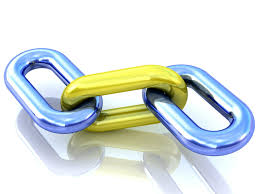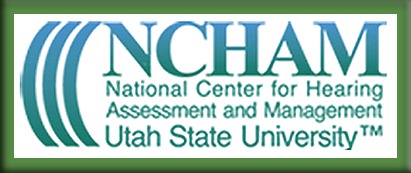ECHO Initiative Events
Monday, Aug. 19, 2019
2-3 p.m. ET
* * * * * * * * * * *
Tuesday, Aug. 20th, 2019
2-3 p.m. ET
* * * * * * * * * * *
Thursday, Aug. 22nd 2019
2-3 p.m. ET
* * * * * * * * * * *
Additional Training Opportunities:
Link to Previous
Recorded Webinars:
Our most recent
recorded ECHO Initiative / Prevent Blindness
webinar from
July 29th, 2019:
* * * * * * * *
If you've missed any of
our other previous webinars,
|
|
|
|
I
f your program is new to OAE screening, or if you have added new staff who need instruction on OAE screening practices,
where staff can view instructional video modules
and access the
corresponding resources.
|
|
Quick Links
|
|  Find more helpful hints from previous issues of Probes and Tips and many other
resources at: www.kidshearing.org |
|
|
 |
|
Six Steps You Can Take Now to Prepare for Upcoming Hearing Screenings
Although it may seem like a routine activity, the fact that your program is providing hearing screening and follow-up to the children you serve is a remarkable benefit.
Each day, children with hearing loss
attend Head Start. . .

How will we know who they are??
Conducting periodic screening to help identify children who are deaf or hard of hearing, and enabling these children to receive needed services, is a tremendous contribution to their future success. At the ECHO Initiative, we realize that it requires planning and effort to ensure that each child in your program gets a high-quality hearing screen. Taking a little time now to prepare for upcoming screenings can ultimately be a time-saver. Here are six steps you can take to be ready:
1. Check your screening equipment. Make sure your equipment is working properly and has been calibrated within the last year.
If your equipment uses batteries, check to see that they are fully charged (or that fresh batteries are installed) prior to screening.
- If using Pure Tone equipment, complete a self-listening check. Alternately, this could be done on another adult known to have normal hearing.) This is critical for knowing if your equipment is in good working order.
- If using OAE equipment, visually examine it and then conduct a screening on yourself or another adult who is known to pass. Also be sure you have ordered enough disposable probe tips and other supplies for the coming year. Remember to keep some adult-size tips on hand as well, which will be used as you test your equipment regularly and/or train new screeners.
If you have concerns about the equipment, consult with your partner audiologist, equipment distributor, or equipment
manufacturer.
Finally, if screening equipment will be used by more than
one screener at more than one site, determine the most efficient way to facilitate sharing and transferring it from one location to the other.
2. Organize other materials needed for screening.
This may include:
- Screening toys or distractors
- Stickers or other appropriate rewards
- Documentation forms
- Sanitary wipes or other supplies needed to comply with your infection control or universal precautions guidelines.
3. Communicate with individuals who can support your screening activities. This may include your Health Services Advisory Committee, teachers, health care providers, parents and others. Inviting them to watch a 5-minute video describing screening for children 0-3 or 3-5 years of age is a quick way to help them understand the importance of hearing screening.
4. Have a conversation with your pediatric audiologist partner to review program strengths and needed improvements. Discuss the ways in which previous screening an
d referral efforts have gone smoothly and explore alternate strategies for addressing problem areas.
If you don't have a pediatric audiologist partner, you may be able to find one by contacting your local Part C/Early Intervention progra
m, or your state
Early Hearing Detection and Intervention (EHDI) Program Coordinator
(who typically has contact information for all pediatric audiologists in the state).
5.
Refresh screener skills or train new screeners. Take advantage of online, instructional
OAE or Pure Tone video mod
 ules that provide step-by-step guidance on how to use screening equipment effectively with young children. In und
e
r an hour, previously-trained screeners can refresh their skills by reviewing modules 5 - 9, and completing the corresponding practice exercises.
ules that provide step-by-step guidance on how to use screening equipment effectively with young children. In und
e
r an hour, previously-trained screeners can refresh their skills by reviewing modules 5 - 9, and completing the corresponding practice exercises.
If you're training new screeners, you'll want to be sure that they complete the full set of modules and exercises, and that your audiologist partner or an experienced screener provides additional "hands-on" coaching and feedback while screening children.
6. Determine how
you'll track children through the screening, referral and follow-up process. The ECHO Screening & Diagnostic Log is an Excel spreadsheet, available to all programs, that allows children's screening outcomes to be entered and prompts follow-up steps for those who did not pass. You can download the Log and watch the instructional video at any time. Having a system in place before screening begins will minimize the risk of losing track of children who need follow-up screening or evaluation.
Accomplishing these tasks in the near future will hopefully contribute to a less hectic screening season ahead!
|
 |
Have any other questions about
how to 'gear up' for hearing screening?
If so, let us know at:
And, as always, share
www.KidsHearing.org
with anyone you think would benefit from our resources.
|
|

2615 Old Main Hill
Logan, UT 84322
|
|
|